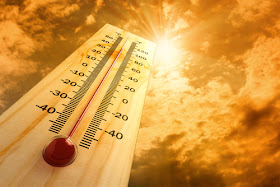Lately many Bh owners are complaining about seeing less birds in their Bhs, nests are getting smaller, slow increase of nests and so on.
Some readers had emailed me and some had called me personnel wanting to know what had happened.
I told them there is nothing to be worried, the previous 2 years was good it rains almost every day. There were plenty of birds everywhere in the sky. The nests were in good quality and good shape. Of course we can’t expect every year the same as this is nature which we have no control of. In fact I look at it as a good opportunity. This is the time of test. Testing how good we have built our Bh.
The Heat Wave is here and the Meteorological Department expected it to continue till September. That is 5 months from now. Could your Bhs withstand it?
Bhs that are simple built without understanding heat control, ventilation and insulation properties are the first to be affected by this Heat Wave.
Heat Wave causes migration of Swiftlet. There are 2 types of migration.
1) From Bhs to Bhs.
a) Rising internal temperature cause by heat penetrating thru walls, ceiling, etc.
b) Movement of hot air from outside (36-38C) into the Bhs
c) Because of A &B factors the RH would drop tremendously.
d) Saliva of birds easily dried up making it hard for them to build nests.
e) Young birds may not survive due to the high internal temperature.
2) From Areas to Areas
a) Less food (insects & flies) during this period.
b) Birds have to venture to areas that have rain.
c) Biologically they would delay their breeding period, Possibility of reducing in brooding.
d) Take longer time to raise young chicks..
If yours Bhs condition is similar to No: 1 then swiftlets from your Bh would migrate to your neighbor’s Bhs that have lower temperature with better micro control. You would see less and less birds and slow growth in nests. While your neighbor’ Bhs would see better result with moderate increase in nests.
If the whole geographical area is affected by the Heat Wave (No: 2) birds would migrate to areas that are cooler with rain. Bhs in such area would see nests and birds population reduced. Those Bhs that are not done properly would be the first to be affected. In general if such condition prolonged and become worse all Bhs at the same area would be affected, but the changes in birds’ population and number of nests of those poorly built Bhs would be greater than those Bhs that have good internal control.
What can you do to reduce Heat Wave effects?
1) Increase RH in Bhs (increase the use of Humidifiers, water sprinkler, etc)
2) Put water in bucket in Bh
3) Wet the floor of the Bh
4) Control Ventilation Holes (Too many Vent-Holes would bring outside hot air (37C) into the Bh. Too few would turn the mist into hot steam.
5) Add insulation materials on wall (outside) and ceiling that are hot.
Hope the above helps.
Good Swiftlet Farming All!
=======================================================================
KUALA LUMPUR - The current heat wave and dry weather enveloping many parts of the country is expected to continue at least until September.The Malaysian Meteorological Department forecasting director Saw Bun Liong said the nation was experiencing a combination of weather factors that had led to the current hot weather.
He said the annual southwest monsoon usually caused hot and dry weather but the arrival of tropical storm Aere in the Philippines and the low pressure system in the Indian Ocean were contributing to higher temperatures.
Although the heat wave may continue, Saw said the worst might be over as Aere was now moving north.
Temperatures this month reached a high of 36.2ºC last Friday, recorded in Subang while the temperature here reached 36ºC yesterday.
The hottest day in the nation was recorded on May 18, 1998, when temperatures reached 38.9ºC in Chuping, Perlis and 38ºC in Malacca.
"We will still see lower levels of rain and more dry spells in the months ahead due to the southwest monsoon season which is expected to last until September," he told the New Straits Times yesterday.
During this season, northern peninsular states, Sabah and parts of Sarawak are expected to see lower rainfall in the next two months.
In June, Limbang and Miri are expected to see between 20 and 40 per cent below average rainfall, while slightly below average rainfall is also expected in Labuan, West Coast and the interior divisions in Sabah.
Normal rainfall is expected to resume in all states in September.
Deputy director-general of health Dr Lokman Hakim Sulaiman said the hot weather could cause serious problems like heat stroke, which can be fatal.
He said people most at risk were those above 40 years old as they were 10 times more at risk than younger people.
He added that children below five years were also at greater risk, as with those suffering from breathing and heart problems, high blood pressure, diabetes and thyroid problems.
Dr Lokman also discouraged wearing tight and thick clothing as it prevented heat from escaping through evaporation .
He said people should be on the lookout for heat exhaustion symptoms like headaches, lethargy, poor concentration, dizziness, cramps and nausea.
"It's serious as the heat can cause dehydration, confusion and coma."
He advised people to drink plenty of water, including isotonic drinks, stay indoors, limit outdoor activities, have frequent rests, bathe or use fans to cool down, use light, loose and bright clothing and to use hats or umbrellas outdoors.
Dr Lokman also advised against consuming sweet drinks and also those with caffeine and alcohol.
He also cautioned parents on leaving children in cars with closed windows and exercising in hot weather.
Those with severe heat exhaustion should also seek immediate medical treatment at the nearest clinic or hospital.
Source: AsiaOnline/May 2012
